Last Updated on January 29, 2025
INTRO: In 1968, director George A. Romero shocked the world with his feature debut Night of the Living Dead. The horror film that introduced the concept of flesh-eating ghouls; the walking dead, driven by an urge to consume the living. A new kind of monster that captured imaginations and scared the hell out of people. Although the word “zombie” is never spoken in the film, that’s what the audience would decide these things should be called. And zombies remain incredibly popular to this day. A couple decades after making Night of the Living Dead, Romero and his collaborators decided to produce a remake. Night of the Living Dead 1990 (watch it HERE) didn’t go over as well as its predecessor did, to put it lightly. But it is one of the best remakes of a horror classic we’ve ever gotten. And if you haven’t seen it yet, it’s the Best Horror Movie You Never Saw.
CREATORS / CAST: Romero directed the original Night of the Living Dead from a screenplay he wrote with John A. Russo. When it came time for the remake, Romero handled the writing duties himself. He stuck to the concept of seven people seeking shelter in an isolated farmhouse as the unburied dead return to life. As the night goes on, tensions flare and lives are lost. The small group of characters are even the same, they interact with each other in the same ways – for the most part. Some of them even meet the same fate in 1990 as they met in 1968. Romero did tweak the dialogue and add in the occasional twist. He also scripted the remake to be faster and more eventful. But he decided not to direct the movie.
Online trivia claims that Capricorn One and Outland director Peter Hyams was offered the chance to take the helm. That didn’t work out because Hyams opted to make the Gene Hackman thriller Narrow Margin instead. It’s difficult to find a source for this claim, so it may or may not have happened. What definitely happened is that Romero asked legendary special effects artist Tom Savini to direct. Romero and Savini had a working relationship that went back nearly fifteen years at that point. Savini had been providing the bloodshed and taking acting roles in Romero’s films since Martin in 1976. Romero had also given Savini the chance to get into directing, having him direct three episodes of his anthology series Tales from the Darkside. Based on the strength of those episodes, Romero knew his longtime collaborator could handle Night of the Living Dead 1990.
Romero and Savini had first met when Savini was still in high school. This was in the mid-‘60s, when Romero was thinking of making a movie called Whine of the Fawn. It would have been a coming-of-age movie set in the Middle Ages, centering on a couple teenagers. The teenage Savini was interested in being involved with the movie. When that project was scrapped and eventually replaced by Night of the Living Dead, Savini wanted to do the special effects. But he got sent off to the Vietnam War before filming began. When the new Night was brought up to him, it was like getting a second chance to work on the movie he missed out on.
Savini had some ideas for the new movie that got shot down very quickly. Since the first Night had been in black and white, he thought the remake should start that way, with color gradually seeping in. The producers weren’t into that. The remake is in color from the first frame. He also pitched the idea of zombie point-of-view shots that would be in black and white, going in and out of focus. Romero didn’t like that, feeling that seeing the world through the eyes of the zombies would give the dead too much life.
One major change that Savini was able to bring to the table was the evolution of the Barbara character. In the original film, Barbara – played by Judith O’Dea – had been shocked into a catatonic state early on and never really emerged from it. Savini wanted her to start off as an unstable, mousy schoolmarm type. Someone who needs her brother to drive her two hundred miles to the cemetery her mother is buried in. She can’t handle the drive on her own. But as the world falls apart around her, Barbara finds her inner strength and becomes a badass heroine. His vision for Barbara even drew comparisons to Sigourney Weaver in Aliens. Romero went along with it. A chance to make up for how weak Barbara had been the first time around. Caroline Williams, who had worked with Savini on The Texas Chainsaw Massacre 2, was considered for Barbara, but the role went to Patricia Tallman. An actress and stuntwoman who had known Savini and Romero for a long time; she even had roles in Knightriders and one of Savini’s Darkside episodes.
A very strong character in the original film had been Ben, played by Duane Jones. It was going to be tough for anyone to try to live up to Jones’ performance. Ving Rhames, Laurence Fishburne, and Eriq La Salle were up for the role. Romero’s then-wife Christine, an associate producer on the project, was particularly impressed by La Salle’s audition. But then future genre icon Tony Todd, still a few years away from playing Candyman, came in and blew Savini away with his audition. He got the part.
Aside from Barbara, who would be looking quite different with short red hair, Savini wanted the cast to resemble the original’s as much as possible. Given his association with horror, you might think he cast Tom Towles in the film because he was familiar with him from Henry: Portrait of a Serial Killer. But Savini hadn’t seen Henry. He cast Towles as the hard-headed, hot-tempered Harry Cooper, Ben’s nemesis, because he could act and looked like Karl Hardman from the first movie. McKee Anderson was cast as Harry’s long-suffering wife Helen, originally played by Marilyn Eastman. The Coopers have a young daughter who’s suffering from a zombie bite. This character, named Karen and played by Kyra Schon in ‘68, is now Sarah, played by Heather Mazur. Stepping in for Keith Wayne and Judith Ridley as young lovers Tom and Judy were William Butler and Kate Finneran. This was Finneran’s screen debut. Genre fans already knew Butler from things like Ghoulies II, Friday the 13th Part VII: The New Blood, Freddy’s Nightmares, and Leatherface: Texas Chainsaw Massacre III. That’s right, the guy shared the screen with Ghoulies, Jason, Freddy, Leatherface, and Romero zombies. Now that’s a career to be proud of.
Of course, it was also necessary to cast someone special in the role of Johnny. Barbara’s short-lived brother who speaks the famous line, “They’re coming to get you, Barbara.” For this role, Savini chose Texas Chainsaw Massacre 2’s Bill Moseley. The original Johnny had been played by Night of the Living Dead producer Russ Streiner, who returned to produce the remake alongside Romero and original co-writer John A. Russo.
BACKGROUND: Night of the Living Dead 1990 – or Night ’90, as it’s called by fans and the people who behind it – exists because of an error a distributor made twenty-two years earlier. The original film had landed a distribution deal with Continental Releasing. A division of the Walter Reade Organization. But when they handed the film over, it was called Night of the Flesh Eaters. The decision was made to change the title to Night of the Living Dead… and when the distributor changed the title, they forgot to put a copyright notice on the film. Without that, Night of the Living Dead became public domain as soon as Continental sent it out into the world.
The movie racked up millions of dollars that didn’t go to Romero, his collaborators, or the rest of the investors. The Night makers filed a lawsuit against Continental that dragged on for years. As soon as a three million dollar judgment was made in filmmakers’ favor, Continental went bankrupt, so that three million went out the window. They did get the rights to their movie back, but the bootlegging was so prolific they still didn’t make much profit from it. They tried their best to take unauthorized copies and merchandise off the market, but it proved difficult to keep control of that stuff. Around 1986, another lawsuit had to be filed when Hal Roach Studios made a colorized version of the film without permission. Once that issue was dealt with, Russo decided it was time to face another problem. The possibility that someone would try to remake Night of the Living Dead. When he heard that a company in Texas was considering doing just that, he called Romero to get the ball rolling on their own remake.
Romero openly admitted to Fangoria that the decision to make Night ’90 was purely financial. They wanted to make money for the original investors who had been screwed over by the copyright ordeal. In the decades since Night ’90 was released, we have seen unauthorized remakes being released. Along with other attempts to cash in on the familiar name without involving the original filmmakers. But at the end of the ‘80s, Romero, Russo, and their associates were able to get their remake into production before anyone else could. Almost everyone who had a hand in Night ’68 was invited back to be part of Night ’90 – but there was one notable absence. Bill Hinzman had played the Cemetery Ghoul, the first zombie we see in the original film. He was one of the original Night investors, and you might expect to see him at least make a cameo in the remake. That didn’t happen because he and the others had just had a falling out. While they were trying to get the remake off the ground, Hinzman had decided to make his own low budget zombie movie. He basically played the Cemetery Ghoul again in that film, which is best known by the title FleshEater. Romero and Russo had sent cease and desist letters to Hinzman telling him not to make it. He made it anyway. So he’s not in Night ’90. Thankfully, the old friends did bury the hatchet eventually. And FleshEater is really entertaining too.
While the original Night was made for just over one hundred thousand dollars, Night ’90 had a budget of four million. Menahem Golan’s production company 21st Century Film Corporation got involved. A distribution deal was made with Columbia Pictures – a company that had passed on the chance to release the original because they didn’t like the downbeat ending. That makes it sound like things should have been great on Night ’90. Production should have gone smoothly. It should have been a blast to work on. And yet Savini has called the experience of directing the film the worst nightmare of his life.
The trouble started well before filming. Savini had storyboards drawn of every single shot he wanted to capture on film. Romero was impressed. Then he pointed out that Savini had more shots planned than he’d be able to pull off during the thirty-six day shooting schedule. So the director already had to start whittling down his vision in the storyboard stage. Like the previous Dead movies, Night ’90 was shot in Pennsylvania. But once filming began, Romero was only on set for a few days. He was writing the Stephen King adaptation The Dark Half and had to get back to his home in Florida. He was facing a deadline and needed to focus on his script. Once Romero left, everything went to Hell as far as Savini was concerned. He did not get along with the two producers who were left in charge. He has never named names, but has said he didn’t have any issues with Romero, his wife, Russo, or Streiner. So you can try to figure out who gave him grief from there.
These producers were constantly rushing Savini. They told him there wasn’t enough time for some of the interesting shots he had planned. He wasn’t given any time to shoot the moments necessary for suspense-building scenes. He has even claimed that one of the producers would call Romero and lie to him, telling him Savini was wasting time on set. During an interview with Film Monthly, Savini said, “My hands were just slapped all over the place. I couldn’t do a lot of stuff. The movie is about forty percent of what I intended. It would be a much better movie if I had gotten to put in all the stuff I really wanted to do.”
One interesting scene that Savini had shot needed to be removed from the film in case of a lawsuit. The movie begins with Barbara and her brother Johnny visiting the cemetery where their mother is buried. Johnny is attacked and killed by a zombie there, and Barbara runs off to the nearest farmhouse. Later, when zombies are attacking the farmhouse, Barbara was supposed to see a female ghoul that reminded her of her mother. This scene was filmed, Barbara imagining that an approaching zombie is her mom. Then the zombie gets shot in the head. Unfortunately, the person playing the mom look-alike zombie got a concussion from the blood squib on their head. The producers decided to take her out of the movie in case she ended up suing them for that injury. Her scene was replaced by the shirtless zombie who comes busting in. Barbara uses him as an example, showing that he can’t be killed unless he’s shot in the head.
Night ’90 was cut down more at the behest of the MPAA. They seemed to have it out for Savini, since he was known as the King of Splatter. And they probably weren’t too happy that Dawn of the Dead and Day of the Dead had bypassed them and been released unrated. So they made sure to take as much blood out of Night ’90 as they could.
Night ’90 earned its R rating and was given a theatrical release in October of 1990. But despite the well-known title and the Halloween season release, it wasn’t a hit. The audience didn’t seem very interested in watching a new version of Night of the Living Dead. The film made just under six million at the box office. Night ’90 remains in the conversation because it was a remake with Romero’s involvement. It has just never been as popular as the Dead movies that came before it. It does have a solid fan following, and some horror fans even enjoy it more than the original. But a lot less horror fans have seen it than have seen Night of the Living Dead ’68. Made for financial reasons, Night ’90 didn’t make much money and didn’t have much of an impact.
WHAT MAKES IT GREAT: Savini is disappointed with a lot of things about Night ’90. He doesn’t like the music by Paul McCollough, a composer he didn’t choose himself. He seems to feel that night falls too late in the movie. One Blu-ray release tried to fix that for him by darkening the image. Fans didn’t appreciate that very much. Savini’s vision was compromised, and he even released a book of his storyboards to show fans what could have been. He did have some good ideas for moments that would have made the movie even better. But while the movie isn’t what he imagined, it’s still really good.
Savini and cinematographer Frank Prinzi were able to capture an unsettling tone for the film. And while the director feels differently, McCollough’s music goes well with the imagery. There’s something very chilling about this movie. You truly feel like you’re stuck in that farmhouse with the characters. On a dark, lonely night. Surrounded by the dead. And the farmhouse they filmed in was an incredible find, the perfect location on an awesome-looking piece of property.
There’s an intensity to Night ’90 for most of the running time. It feels like the characters never get a chance to let their guard down for more than a second. In both this film and the original, the people in the farmhouse board up the doors and windows to keep the zombies out. Or so they hope. The boarding process is done fairly early on in the ’68 film, and the boards are mostly secure. The characters are allowed to take a breather now and then. Watch some television. That’s not really the case in this one. And not just because the TV gets smashed. The boarding process continues throughout the majority of the film. The characters are constantly hammering things over doors and windows. And the zombies are always right there to complicate the process.
Savini and Romero use the viewer’s knowledge of the original to drop in misdirects. There are times when you think you know what’s going to happen, because you saw the first movie. But then Savini hits you with a surprise. A big example of this comes during the first zombie attack. When Barbara and Johnny see a dazed-looking old man approach them, you assume it’s a zombie. The Cemetery Ghoul. But he’s just an injured mourner. Barbara and Johnny are so focused on him, they don’t see the actual Cemetery Ghoul until it’s too late. The Barbara character is another curveball. At first, it looks like she’s going to be overwhelmed and follow the original Barbara into catatonia. But then she snaps out of it. She becomes stronger as the night goes on.
Just like in the ’68 movie, Ben and Harry Cooper have a serious disagreement over whether or not they should hide in the cellar. This time, Barbara presents another option: the zombies move so slowly, she feels they can just walk away from the farmhouse. Take their guns and walk to safety. In this case, Barbara is right. Walking out of there is the best thing to do. But the others are too afraid of the zombies to take that risk.
Tallman delivered a great performance as Barbara, and the cast around her do strong work in their roles as well. Standouts are, of course, Todd and Towles as Ben and Cooper. Those are the showiest parts, their conflict gets a lot of attention, and the actors made a meal of it. Their arguments get extremely heated. You can feel their violent anger emanating off the screen.
BEST SCENE(S): Todd impressed Savini in his audition by memorizing lines quickly and getting emotional while reciting them. You can see his skill at this in the finished movie as well. One of the best scenes comes when Ben gives a monologue about his experiences with the dead before reaching the farmhouse. As Todd speaks, tears are rolling down his face. It’s captivating.
But aside from all the emotional moments, there’s plenty of zombie action to hold your attention and keep you entertained as well. It starts early, with an exciting sequence set at the cemetery. That’s quickly followed by more action when Barbara and Ben first reach the farmhouse. Bursts of horror come frequently throughout. As Savini said on his audio commentary, “People go to the movies to see things happen, not to watch people talk.” He made sure there was always something happening in his movie. As he told the Los Angeles Times, he was aiming to make this a remake along the lines of The Thing and The Fly. “Not better, but different. It’s not a strict remake of the original. Same characters, about the same plot, but it’s more intense. A lot more intense.”
From increasing the amount of action to increasing the anger Ben and Cooper feel toward each other, he did successfully make an intense movie.
Toward the end of the film, Romero’s script also takes the story into territory he had entered with Dawn of the Dead and Day of the Dead. The idea that there’s still a hint of humanity in the zombies. And that people lose their humanity while dealing with this situation. We see people making a game of the zombie outbreak. Hanging zombies. Holding zombie fights. Watching this happen around her, Barbara says, “They’re us. We’re them and they’re us.” It’s very reminiscent of the zombie movies Romero made between the two Nights.
PARTING SHOT: The original Night of the Living Dead is a very important film in horror history. The remake, not so important, but it is absolutely worth watching. It’s fun to see Romero and his collaborators return to the material after a couple decades. The result is a movie that may not be an immortal classic, but is still one of the best entries in the zombie sub-genre. Even with producer interference dragging him down, Savini proved to be a solid director. It’s a shame there hasn’t been a lot more Savini-directed movies since this one. But at least he made one that viewers will always be curious about and seek out, due to the title. And unlike other remakes, sequels, and spin-offs that have come since, at least this Night of the Living Dead was done with the approval of the creators.
Some previous episodes of the Best Horror Movie You Never Saw series can be seen below. To see more, and to check out some of our other shows, head over to the JoBlo Horror Originals YouTube channel – and subscribe while you’re there!



















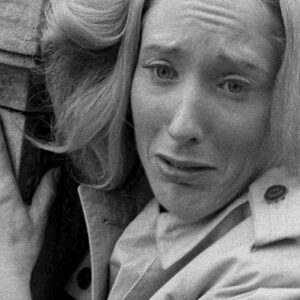

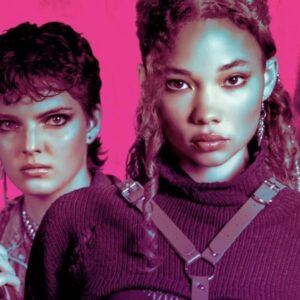





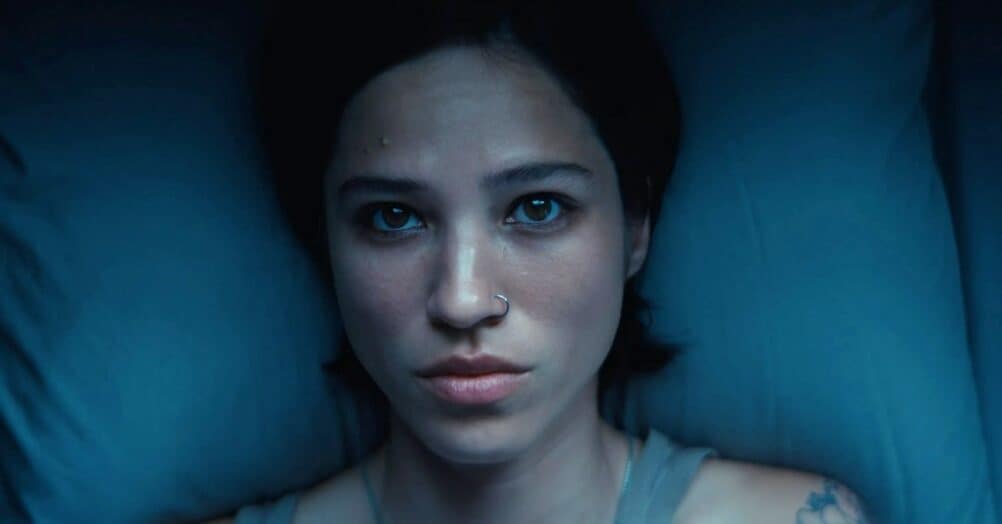
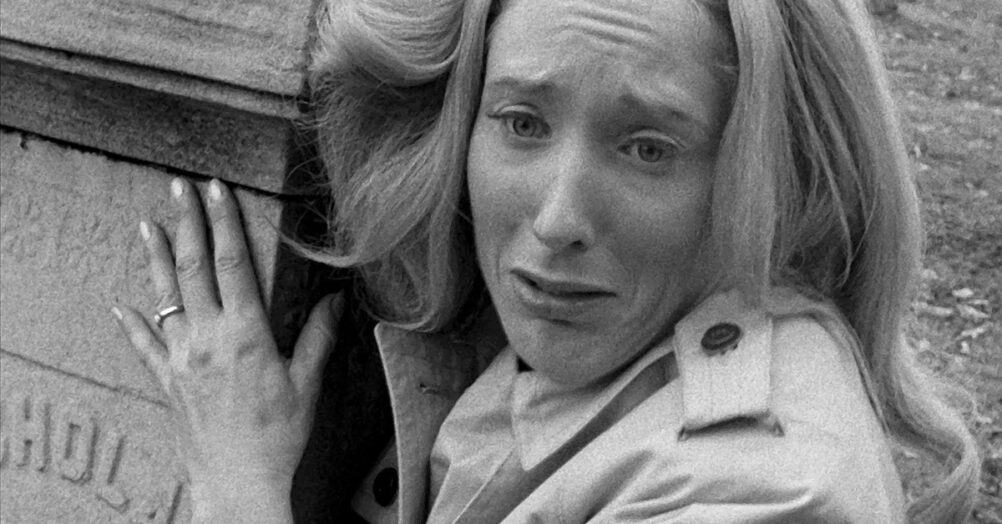

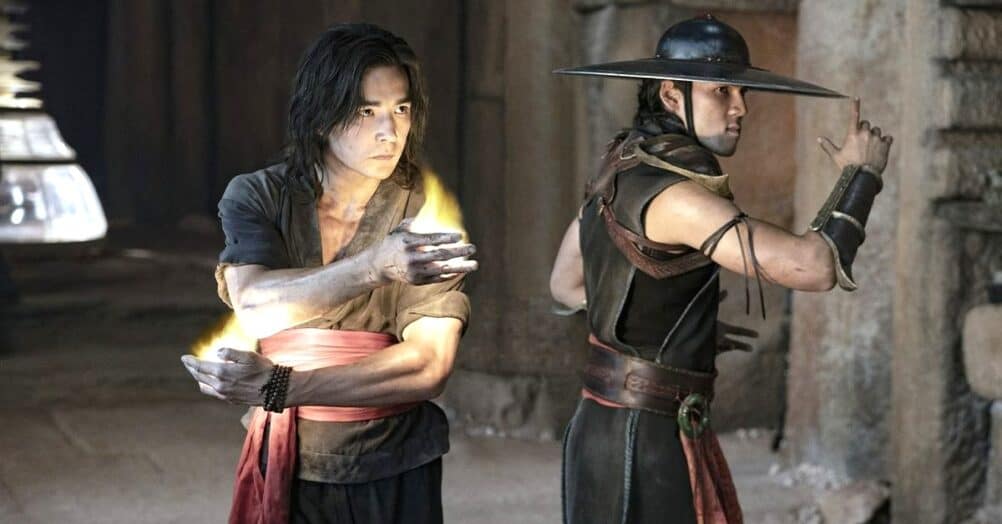


Follow the JOBLO MOVIE NETWORK
Follow us on YOUTUBE
Follow ARROW IN THE HEAD
Follow AITH on YOUTUBE